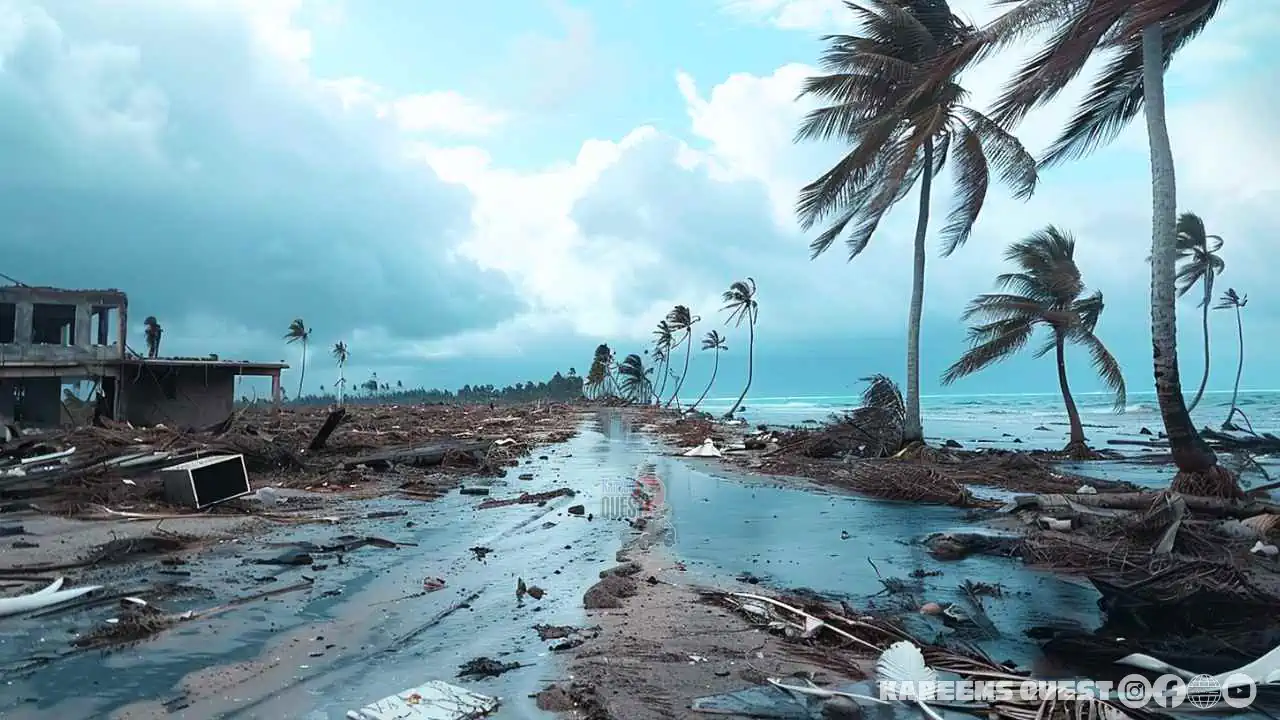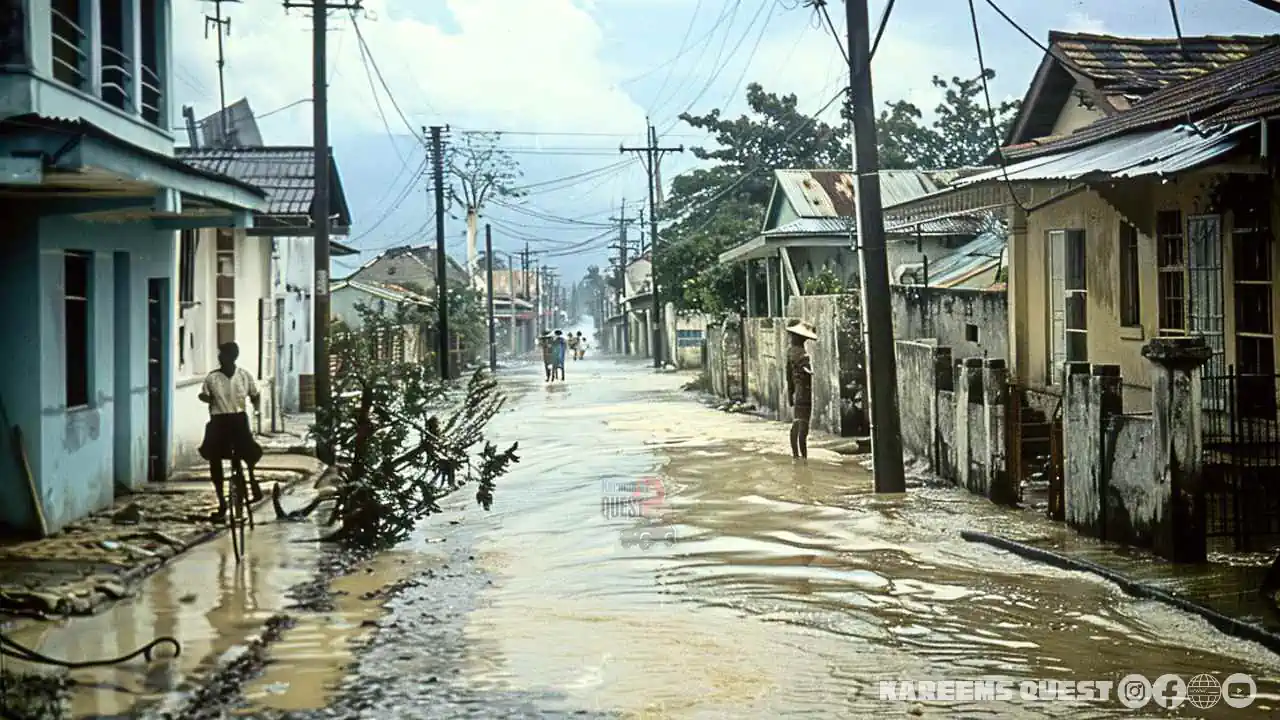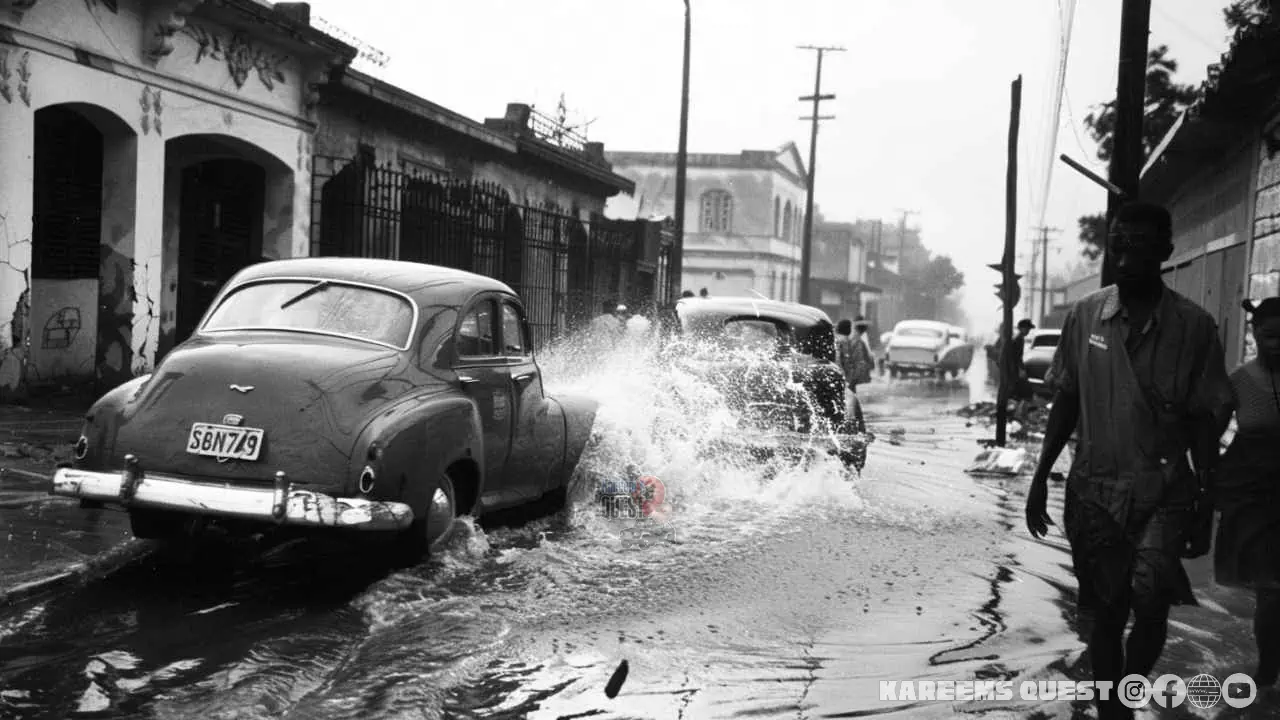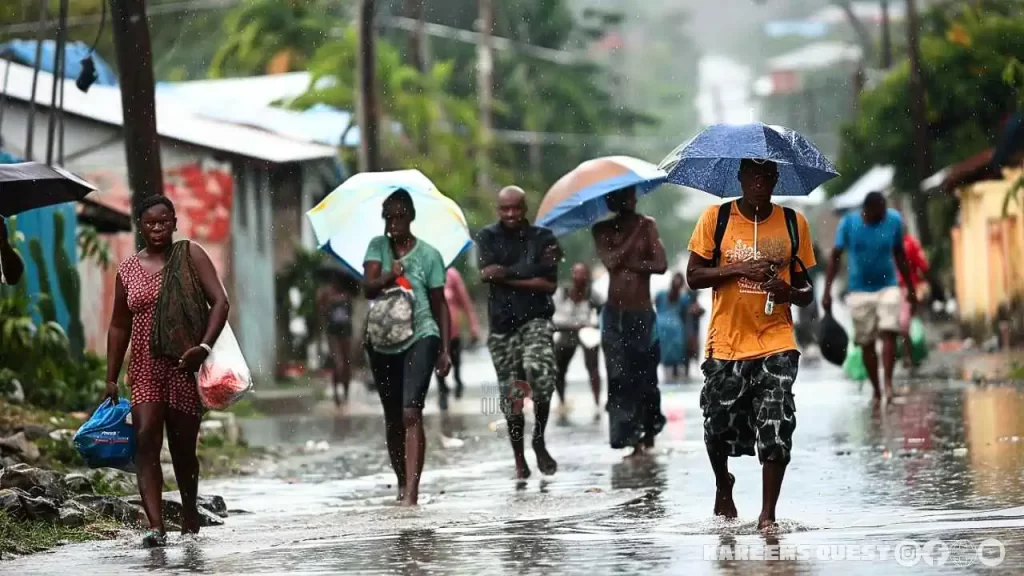Jamaica, the island nation famed for its vibrant culture and stunning landscapes, has a long and unfortunate history with hurricanes. These ferocious storms have repeatedly battered the island, leaving a trail of destruction and testing the resilience of its people. Here, we delve into four of the most devastating hurricanes to strike Jamaica, highlighting their impact and the island’s unwavering spirit in the face of adversity.
4. Beryl’s Brush (2024): A Category 4 Reminder

- Category: 4
- Wind Speed: Over 140 mph (225 km/h)
- Date: July 2024
- Origin: Likely developed in the southwestern Caribbean Sea, near Colombia and Nicaragua.
Bulletin: Just this year, Hurricane Beryl, a Category 4 storm, served as a stark reminder of Jamaica’s vulnerability. While a direct hit was averted, the southern parish of St. Elizabeth felt the force of the outer bands. Powerful winds exceeding 140 mph caused localized damage, particularly to infrastructure and coastal areas. Thankfully, the storm’s quick movement minimized widespread devastation. The financial impact, though not yet fully quantified, is a concern. The event serves as a crucial reminder for continued preparedness as Jamaica faces the potential fury of nature.
3. Ivan’s Fury (2004): A Category 5 Cataclysm

- Category: 5
- Wind Speed: Over 160 mph (260 km/h)
- Date: September 2004
- Origin: Developed in the central Atlantic Ocean, west of Africa.
Bulletin: Hurricane Ivan, a powerful Category 4 storm with near Category 5 strength, unleashed its fury on Jamaica in September 2004. While the island dodged a direct hit from the eye of the storm, the impact was still devastating.
Loss of Life and Displacement
The storm claimed the lives of at least 15 people, including a heart-wrenching tragedy where a landslide crushed a home in St. Andrew, killing a father and his three young children. Additionally, over 12,000 Jamaicans were displaced from their homes due to damage and flooding, seeking refuge in shelters across the island.
Infrastructure Damage and Economic Impact
The hurricane caused widespread damage to houses, buildings, roads, and vital agricultural sectors. Prime Minister P.J. Patterson acknowledged the significant economic blow, anticipating a negative impact on the island’s Gross Domestic Product (GDP) due to the disruption in tourism and agriculture.
Swift Response and International Aid
Despite the devastation, Jamaica demonstrated its resilience. The government quickly mobilized, deploying security forces to maintain order and prevent looting. Prime Minister Patterson announced international relief efforts were underway, with support from Caribbean nations, Canada, Venezuela, Britain, USAID, and the UNDP.
Rebuilding and the Road Ahead
The focus shifted towards recovery efforts. Shelters were established, and plans were laid out to reopen airports and schools as quickly as possible. While the path to rebuilding was long, the Prime Minister expressed confidence in the nation’s ability to recover and continue with development programs, highlighting the unwavering spirit of the Jamaican people.
2. Gilbert’s Wrath (1988): A Category 5 Colossus

- Category: 5
- Wind Speed: Over 175 mph (280 km/h)
- Date: September 1988
- Origin: Developed in the eastern Caribbean Sea, near the Lesser Antilles.
Hurricane Gilbert: A Category 5 Nightmare Haunts Jamaica
Hurricane Gilbert, a monstrous Category 5 storm, carved a path of devastation across Jamaica in September 1988. This powerful hurricane, the strongest in the Atlantic until 2005, unleashed its fury on the island, leaving indelible scars.
Unprecedented Destruction
Hurricane Gilbert’s impact dwarfed all previous storms in Jamaica’s history. Packing winds exceeding 140 mph, it ripped across the island from east to west. Over 100,000 homes were destroyed or severely damaged, rendering many homeless. The vital agricultural sector suffered a crippling blow, with the banana crop virtually wiped out. Infrastructure crumbled, with hundreds of miles of roads and vital public health facilities sustaining significant damage. Storm surges reaching 19 feet caused widespread flooding and landslides, further compounding the misery.
A Nation in Crisis
The human cost was staggering. Close to 50 lives were lost, and over 800,000 people, roughly 30% of the population, were forced to seek shelter. Essential services like water, electricity, and communication were disrupted for months, creating a prolonged period of hardship. The environment wasn’t spared either, with coral reefs, mangroves, and wildlife habitats suffering immense damage. Prime Minister Edward Seaga aptly described the scene as “like Hiroshima after the atom bomb.”
Resilience and International Aid
Despite the overwhelming devastation, Jamaica displayed remarkable resilience. The government, with the help of the army, police, and volunteers, mobilized rescue and relief efforts. International aid poured in from countries like the United States, Canada, and Britain, along with organizations like the Red Cross and the UN. Financial assistance, technical expertise, and supplies helped kickstart the long road to recovery.
Learning from the Storm’s Fury
Hurricane Gilbert served as a harsh but valuable lesson for Jamaica and the Caribbean. The importance of accurate weather forecasting, robust disaster plans, and effective coordination between local and international actors became abundantly clear. Public education and community involvement were recognized as crucial for building resilience.
A Stronger Jamaica Emerges
While the scars of Hurricane Gilbert remain etched in memory, it also serves as a testament to Jamaica’s unwavering spirit. The island rebuilt, stronger and more prepared for future threats. The lessons learned from this historic disaster continue to shape Jamaica’s approach to disaster preparedness and risk reduction.
85 Year old remember’s Hurricane Gilbert
1. The Roar of Charlie (1951): A Category 3 Monster

- Category: 3
- Wind Speed: 125 mph (205 km/h)
- Date: August 1951
- Origin: Likely developed in the central Caribbean Sea, south of Hispaniola.
Hurricane Charlie’s Fury: A Devastating Blow to Jamaica
Hurricane Charlie, a Category 3 storm with 125 mph winds, slammed into Jamaica in August 1951, leaving a path of destruction across the island. This powerful hurricane is considered one of the most devastating in Jamaica’s history.
Widespread Damage and Loss of Life
The storm caused widespread damage to infrastructure, homes, and crops. Early reports indicated significant destruction in the banana and coconut industries, vital sectors of the Jamaican economy. Parishes like St. Thomas, Kingston, and Port Royal bore the brunt of the hurricane’s fury. Sadly, the death toll climbed to 110 people, with many succumbing to collapsing buildings or drowning in floodwaters.
Morant Bay Decimated, Kingston Battered
The hurricane’s impact was particularly severe in Morant Bay, with reports suggesting 80% of the town lay in ruins. Kingston, Jamaica’s capital city, also suffered immensely. The storm’s intensity surpassed the damage inflicted by the 1907 earthquake and fire, leaving thousands homeless. The harbor area witnessed significant damage, with ships tossed by the ferocious waves and crashing against piers and beaches.
Relief Efforts Underway
Despite the devastation, the Jamaican spirit of resilience shone through. The government launched a relief mission to Morant Bay, the hardest-hit area. Communication lines were down, making it difficult to assess the full extent of the damage across the island. However, initial reports indicated significant losses in agricultural crops and widespread property damage beyond the heavily impacted southeastern parishes.
A Long Road to Recovery
The hurricane’s impact extended beyond the immediate destruction. The vital agricultural sector faced a long road to recovery, impacting the island’s economy. The task of rebuilding homes and infrastructure was monumental. Hurricane Charlie served as a stark reminder of Jamaica’s vulnerability to natural disasters, but also highlighted the unwavering spirit of its people in the face of adversity.
Create your own adventure
Craving your own Jamaican escape? Head over to our TOUR PAGE to connect with Kareem’s Quest! We can help you plan your itinerary, find the perfect hotels and adventures, and ensure you experience the authentic side of Jamaica.



